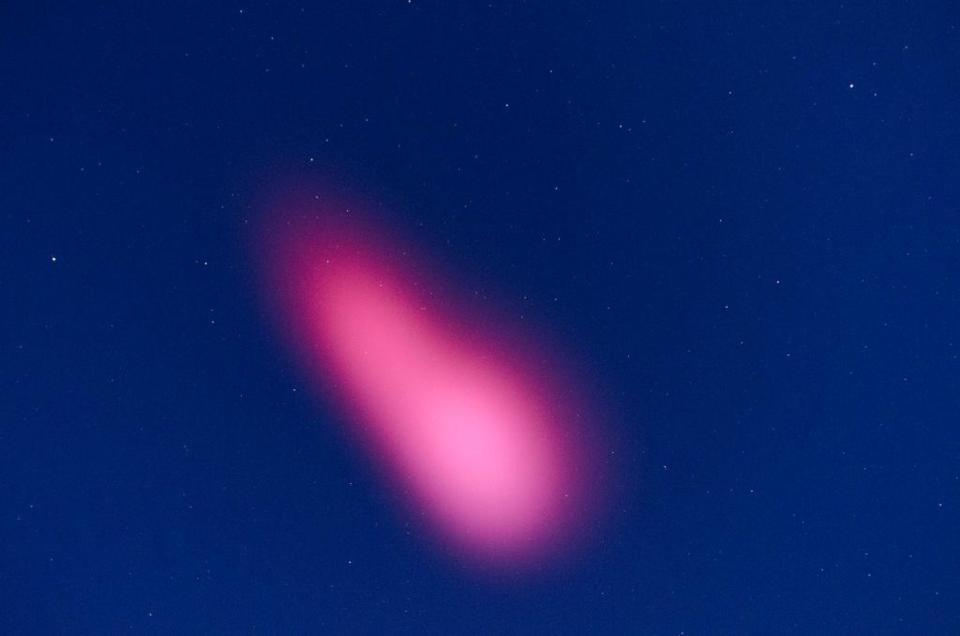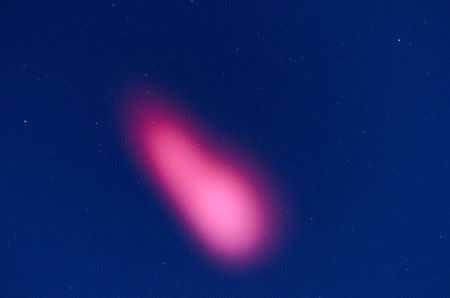Pink cloud from NASA rocket lights up sky over U.S. Southwest
(Reuters) - An unusual pink cloud that lit up the sky over New Mexico and Arizona early on Wednesday was caused by a NASA research rocket launched to study the outer reaches of Earth's atmosphere, scientists said. The cloud stunned many residents who posted photographs online and speculated on social media about its cause, with theories ranging from shootings stars to the sprightly fictional character Peter Pan. But researchers at the White Sands Missile Range in southern New Mexico said the fluffy phenomenon had a much more Earth-bound explanation. They said it was caused by a Terrier-Black Brant rocket designed to reach an altitude of more than 100 miles (160 km) that released a small quantity of vapor - "about as much as is contained in a BBQ grill propane tank" - into the near-vacuum of space to study the formation of the ionosphere. The ionosphere is the outer layer of the atmosphere that extends to about 370 miles (600 km) into space. The White Sands scientists said in a statement the colorful cloud was formed "as the sun illuminates the vapor before it diffuses harmlessly away into space." Ground stations across the U.S. Southwest took a variety of measurements during the experiment, the researchers said. The data will be used to develop enhanced models of ionospheric disturbances in near-Earth space and their effects on modern technologies. (Reporting by Daniel Wallis in Denver; Editing by Bill Trott)


